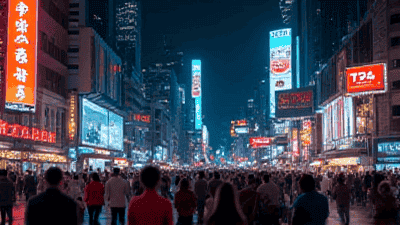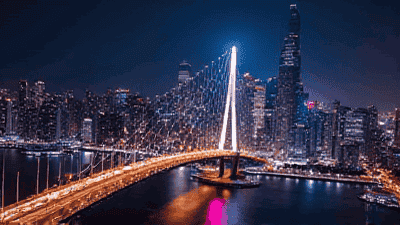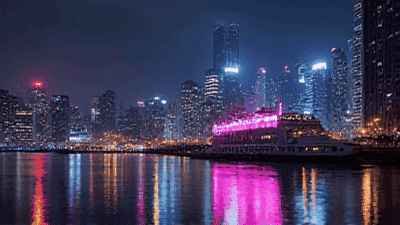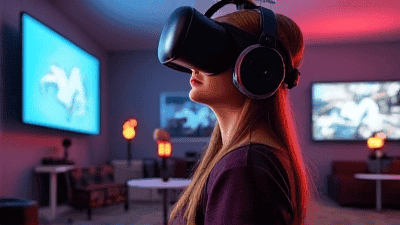
Global Cities After Hours: Immersive Adventures and Unconventional Evening Entertainment Unveiled
Beyond the neon glow of typical bars and clubs lies a burgeoning world of unique nighttime entertainment across global cities. This article delves into the less-traveled paths of after-dark adventures, revealing how metropolises worldwide are redefining evening leisure. From historical ghost tours to futuristic digital art installations and clandestine dining experiences, these offerings challenge traditional notions of nightlife, presenting a rich tapestry of cultural immersion and thrill.
The global shift towards experiential tourism and the demand for authentic cultural engagement have spurred a renaissance in nighttime offerings. For urban planners, tourism boards, and local communities, understanding and fostering these unique experiences is crucial. They not only attract diverse visitors but also rejuvenate urban spaces, boost local economies, and create a distinct identity for cities. Current trends show a move away from passive consumption towards active participation, with technologies like augmented reality enhancing immersive narratives. Yet, debates around preserving local character versus commercialization, and ensuring safety in late-night ventures, persist. These unique entertainments are key to understanding modern urban evolution, reflecting cultural narratives and technological advancements. What impact would it have on our understanding or practice of urban development and cultural exchange if we failed to fully comprehend this vibrant, often hidden, dimension of city life?
Echoes of the Past, Lights of the Present

Guided Ghost Tours and Historical Night Walks
Many global cities, rich in history, have found that twilight offers a profound canvas for storytelling, leading to the rise of immersive cultural and historical night experiences. Guided ghost tours and historical night walks exemplify this, transforming familiar landmarks into stages for captivating narratives. These tours (often led by theatrical guides) delve into local legends, folklore, and documented historical events, offering a perspective inaccessible during the day. For instance, Edinburgh's famous 'Vaults' tours explore a subterranean world beneath the city's streets, recounting tales of poverty, plague, and supposed paranormal activity, fostering a tangible connection to its dark past. Similarly, New Orleans' French Quarter comes alive with stories of voodoo, pirates, and colonial intrigue after sunset, creating an atmospheric journey through its complex heritage. These experiences are not merely about entertainment; they are living history lessons, enhanced by the dim light and quiet streets that allow imaginations to roam free. Some tours, like those exploring Rome's ancient ruins, utilize modern projection mapping and augmented reality (AR) to overlay historical scenes onto existing structures, allowing visitors to 'see' gladiators in the Colosseum or citizens bustling in the Forum. This blend of authentic site, compelling narrative, and often a touch of the supernatural provides a unique form of cultural immersion, proving that history is best savored when the city sleeps. These walks are like peeling back the layers of time under the cloak of night.
Illuminating the Urban Canvas
Digital Art Installations and Light Festivals
In stark contrast to historical explorations, many global cities now harness technology to create breathtaking futuristic and artistic urban spectacles, especially after dark. Digital art installations and light festivals have become pivotal attractions, transforming architectural façades, public squares, and even entire districts into dynamic canvases. These events leverage advanced projection mapping (where video content is precisely aligned and projected onto irregular surfaces), LED technology, and interactive sensors to create immersive, often participatory, art experiences. A prime example is Vivid Sydney, an annual festival that illuminates the city’s iconic structures, including the Opera House and Harbour Bridge, with dazzling light art and projections, often accompanied by music and innovative ideas. Similarly, Lyon’s Fête des Lumières, with its roots in religious tradition, has evolved into a world-renowned festival where local and international artists showcase elaborate light installations throughout the city. These spectacles democratize art, making it accessible to millions, and foster a sense of collective wonder. They also serve as catalysts for urban regeneration, drawing crowds into previously underutilized spaces and stimulating local economies. The innovation isn't just in the visual artistry; many installations invite audience interaction, allowing visitors to manipulate light, sound, or projection elements through their movements or mobile devices, turning spectators into participants.
Here's a snapshot of some prominent global light festivals:
| Festival Name | Location | Primary Focus | Estimated Annual Attendance |
|---|---|---|---|
| Vivid Sydney | Sydney, Australia | Light, Music, Ideas | 2.3 Million |
| Fête des Lumières | Lyon, France | Artistic Light Installations | 1.8 Million |
| Amsterdam Light Festival | Amsterdam, Netherlands | Contemporary Light Art | 0.9 Million |
These festivals illustrate a growing trend: using the city itself as a monumental backdrop for cutting-edge artistic expression, drawing diverse audiences to experience urban spaces anew.
Palates After Dusk

Clandestine Dining and Themed Social Gatherings
Beyond traditional dining, global cities are seeing a surge in unique culinary adventures and themed social gatherings that thrive after dark, offering more than just a meal but an entire experience. Clandestine dining, often in the form of pop-up restaurants or secret supper clubs, epitomizes this trend. These events typically feature bespoke menus, unique atmospheres, and often an element of surprise regarding their location, which might be an abandoned warehouse, a rooftop with panoramic views, or a historical building. The allure lies in their exclusivity and the shared discovery among a limited number of guests, fostering a unique sense of community. For instance, 'Dinner in the Sky' offers a gourmet meal suspended 50 meters in the air, providing both fine dining and an adrenaline rush with breathtaking cityscapes. Furthermore, themed social gatherings, such as immersive murder mystery dinners or escape rooms integrated with dining experiences, combine entertainment with gastronomy. Guests become part of a narrative, solving puzzles or crimes while enjoying carefully curated meals that complement the theme. These culinary speakeasies cater to a desire for novelty and memorable interactions, creating social bonds over shared extraordinary moments rather than just consuming food.
Conclusion
Our exploration into the unique nighttime entertainment in global cities has unveiled a vibrant, multifaceted world far beyond conventional nightlife. We have journeyed through the atmospheric historical narratives of guided ghost tours, where the past whispers secrets under dim city lights, connecting us intimately with urban heritage. We then navigated the dazzling landscapes of digital art installations and light festivals, witnessing how technology transforms architectural façades into canvases for collective artistic awe and community engagement. Finally, we delved into the intriguing realm of clandestine dining and themed social gatherings, discovering how culinary experiences are elevated into immersive adventures that foster connection and surprise. These diverse offerings collectively redefine urban leisure, demonstrating that cities are living entities that offer profound, distinctive experiences after dark. This emerging sector is not merely supplementary; it is integral to a city's cultural identity, economic vitality, and its ability to engage both residents and visitors in deeply memorable ways. The innovative spirit driving these ventures highlights a universal human desire for discovery, connection, and extraordinary experiences, truly enriching the global urban tapestry.
Looking ahead, the future of unique nighttime entertainment promises even greater innovation and integration. We can anticipate further breakthroughs in augmented and virtual reality, allowing for hyper-personalized immersive narratives that adapt to individual preferences and movements. The convergence of art, technology, and gastronomy will likely lead to entirely new experiential formats, blurring the lines between performer and participant, diner and detective. Challenges remain, particularly in balancing authenticity with commercialization, ensuring accessibility and safety for all patrons, and managing the environmental impact of large-scale events. Macro scientific policies supporting cultural innovation and sustainable tourism will be crucial in guiding this development. Interdisciplinary integration, drawing on urban planning, digital arts, culinary sciences, and psychology, will be key to crafting experiences that are both captivating and responsible. Continuous research into audience engagement, urban impact, and economic models will be vital to sustain this dynamic sector. Ultimately, fostering these unique after-dark adventures will not only enhance urban tourism but also cultivate more vibrant, culturally rich, and resilient global cities for generations to come, making them truly alive at every hour.








